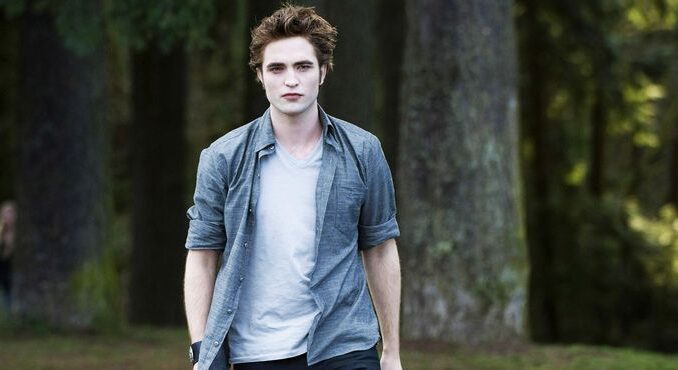
In the shifting sands of Hollywood stardom, few trajectories have been as deliberately crafted and ultimately triumphant as that of Robert Pattinson. From the anemic, sparkling heartthrob of Forks to the grim, haunted vigilante of Gotham, Pattinson's journey is not merely a collection of iconic roles, but a vivid illustration of an actor consciously shedding the gilded cage of teen idol status to forge a formidable artistic identity. It is a narrative of reinvention, resilience, and the relentless pursuit of challenging, transformative characters.
The year 2008 etched Robert Pattinson's face into the global consciousness, not as Robert Pattinson, but as Edward Cullen. In "Twilight," he embodied the ultimate romantic fantasy: a perpetually youthful vampire with marble skin, a possessive gaze, and a tormented soul. Edward's brooding allure, his forbidden love for Bella Swan, and the saccharine romance that unfolded amidst the Pacific Northwest's perpetual twilight captured the imaginations of millions. It was a cultural phenomenon, generating unprecedented fandom, massive box office returns, and turning Pattinson into an overnight superstar. Edward Cullen became an archetype, a generation's crush, and an undeniable icon of paranormal romance. Yet, for the actor, this immense success proved to be a double-edged sword, casting a long, sparkling shadow that threatened to define and confine his entire career. The sheer ubiquity of Edward Cullen, while granting him immense fame, also positioned him precariously on the precipice of typecasting, a fate many teen idols never escape.
But Pattinson, perhaps recognizing the artistic cul-de-sac he found himself in, embarked on a deliberate and often audacious campaign of artistic detox. He didn't just step away from blockbusters; he plunged headfirst into the murky, unconventional waters of independent cinema, choosing roles that were often abrasive, complex, and deliberately unglamorous. This period, spanning nearly a decade, saw him transform from a teen heartthrob into a character actor of remarkable depth. In David Cronenberg's "Cosmopolis" (2012), he played a detached, enigmatic billionaire watching his world unravel from the confines of a limousine. In "The Rover" (2014), he was a simple-minded, wounded youth navigating a desolate Australian outback. He dove into the gritty underbelly of New York City in the Safdie brothers' "Good Time" (2017), portraying a small-time criminal with desperate energy and a manic glint in his eye.
These were not easy watches, nor were they designed to please the masses. Instead, they were rigorous artistic exercises, pushing Pattinson into uncomfortable, often grotesque, territory. He embraced eccentricity in "High Life" (2018), a haunting space odyssey, and descended into madness alongside Willem Dafoe in the atmospheric black-and-white psychological horror, "The Lighthouse" (2019). It was in these roles—the unwashed, the deranged, the emotionally broken—that Pattinson meticulously dismantled the Edward Cullen persona. He stripped away the veneer of conventional handsomeness, revealing a visceral intensity, a willingness to explore the darkest corners of human experience, and a chameleonic ability to disappear into characters. This period was his crucible, forging a reputation not for sparkling skin, but for raw, uncompromising talent.
This cultivated grit, this mastery of nuanced internal struggle, proved to be the perfect preparation for his most audacious role yet: Bruce Wayne, in Matt Reeves' "The Batman" (2022). The announcement of his casting initially met with the predictable internet skepticism, but Pattinson, drawing from his indie film experience, crafted a Bruce Wayne unlike any other. His Batman was not just a caped crusader; he was a recluse, a traumatized orphan, grappling with the weight of his legacy and the existential weariness of his mission. Pattinson's performance was imbued with a profound sense of melancholy, a quiet rage, and a haunted gaze that spoke volumes. He brought the psychological depth of his indie characters to the grand scale of a superhero epic, creating a take on the iconic hero that was both familiar and startlingly fresh.
From Edward Cullen's romantic angst to Bruce Wayne's existential torment, Robert Pattinson’s most iconic roles illustrate a deliberate, calculated journey of artistic evolution. He didn't just find new characters; he became them, shedding one skin to embrace another, always pushing the boundaries of expectation. The sparkly vampire and the shadowy vigilante stand as testaments not only to the breadth of his acting prowess but also to his unwavering dedication to his craft. Pattinson's career trajectory is a masterclass in defying typecasting, a powerful illustration of an actor who seized control of his narrative, transforming a fleeting cultural phenomenon into a lasting legacy of chameleonic brilliance. He showed the world that a heartthrob could be a serious artist, and in doing so, forged a path uniquely his own, paved with undeniable iconic performances.
